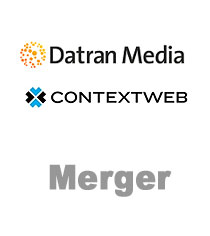 Last week, Datran Media and CONTEXTWEB agreed to merge their companies into PulsePoint, which describes itself as an “integrated digital media technology platform.” Read the release announcing the merger.
Last week, Datran Media and CONTEXTWEB agreed to merge their companies into PulsePoint, which describes itself as an “integrated digital media technology platform.” Read the release announcing the merger.
Patrick Vogt, Executive Chairman, and Tim Murray, CEO, of PulsePoint discussed the merger and the future for the new company.
AdExchanger.com: What was the trigger for the merger of the two companies? Why didn’t standalone make sense anymore?
PATRICK VOGT: The merger was born from market need and our partnership over the past year. We now have a holistic platform addressing the needs of today’s digital marketplace. PulsePoint will provide brands, agencies and publishers with the intelligence, insights and recommended actions that are critical for success in today’s digital arena. Our platform and business model (licensing and media business) are very unique and we believe it is game changing and will allow us to reinvent digital advertising.
TIM MURRAY: The value from the merger is PulsePoint’s ability to enable marketers to cross-inform media and drive the best results across display, social, mobile, video and email through a single platform that is open enough to integrate with other technologies common across large company infrastructures. Individually, we could not do that and we didn’t see any other company with a holistic approach across a sea of single-point solutions.
Our customers and the marketplace at large have been demanding a solution that will enable them to transcend the spreadsheets and truly become smarter and more efficient at what they do. Our market is highly fragmented, with no integration or learning flow between multiple media types, channels and devices. PulsePoint is answering this market need with integrated solutions to target, serve, monitor, validate and report on campaigns across digital channels and devices.
Is PulsePoint addressing audience buying or contextual buying?
PATRICK VOGT: It addresses both in an integrated, higher-value way. When we decided to partner, it was to augment and combine audience targeting with contextual. PulsePoint is a holistic platform that marries CONTEXTWEB’s real-time contextual targeting, exchange and RTB with Datran Media’s leading audience targeting platform, which in turn enables predictable audience engagement at scale across display, social, mobile, video and email. It also delivers the cross-channel insights marketers need to fuel better performance. We will continue to evolve our technology offerings and look for more opportunities in the future.
Can you talk about the opportunity between marrying Datran’s email capabilities and CONTEXTWEB’s offerings?
PATRICK VOGT: Clients will benefit from an enhanced ability to identify and engage their ideal audiences across digital channels, including email, as well as verify their audience reach. PulsePoint also enables marketers to learn from user engagements on one media channel or device and leverage those insights to inform and even predict user engagements on another channel or device. For example, marketers can uncover insights into how customers are interacting with email ads and marketing messages, and then use those insights to determine when, how and which ad messages would have maximum impact in the social channel.
What are your expectations on revenues of the combined company this year? Any sense of growth potential on a year-over-year basis?
TIM MURRAY: As a private company we don’t disclose financial information, however, I can say that we are focused on building a growth company, with quality people and technology that meets marketers’ needs today and positions the company for the future – for where the market is moving.
What will happen to the employees of Datran and CONTEXTWEB with this merger?
TIM MURRAY: To date, employee response to the merger has been extremely positive. Since we have been working so closely together, this was a well-planned deal and changes are expected to be modest. We will be blending some of our departments such as finance and media sales. The technology teams (out of Austin, TX and New York) have been working together for over a year and will continue to work together easily as two teams with an integrated roadmap.
By John Ebbert












